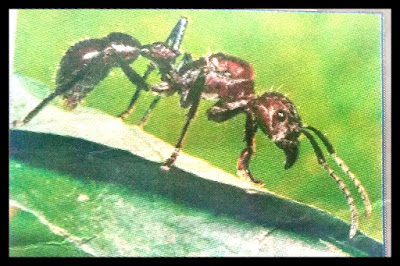1.Dart Frog
Dart Frog is a venomous amphibian that hunts in the Amazon rainforest. They are only inches long. In the forest, they put the venom of this frog on the floor and hunted Noah with it.
2. Piranha
Piranha fish is one of the most hunters living in the Amazon River. They are usually up to 5 cm in length. Their specialty is the presence of sharp teeth in the two jaws of the mouth. Of all the vertebrates, the piranha bite is the strongest.
3. King Vulture
The name of the vulture that can be seen on Amazon 201 King Vulture! They have mainly white feathers all over their body and black feathers at the ends of the wings and tail. There are no feathers on the head and neck; Instead, red on the head, yellow on the neck and orange on the neck.
4. Black Caiman
Another's notable reptile in the Amazon is the Black Caiman, which is 10-14 feet long and weighs 800 pounds. Their whole body is covered with black hard fibers. They are very good hunters, many times they also prey on weak old Caimans.
5. Hyacinth Macaw
Macaws are the largest of the Tia species. They are about 3.3 feet long from head to tail. They are very colorful. The entire body of this type of Macaw is covered with blue feathers, hence the name Hyacinth Macaw. Their curved lips are so hard that they can break up into coconuts. They are now an endangered species due to over-hunting.
6. Bullet ant
Ant bites are the most painful. Their venom is neurotoxic in nature. When they bite an animal, their venom immediately paralyzes the animal's nervous system.
7. Green Anaconda
Green Anaconda: They are huge in size, about 15-16 feet tall and weigh about 60-150 pounds much heavier. They prey on large animals, such as Tapir, Capybara, and even Jaguar.
8. Gorillas
A few years ago four female mountain gorillas left their sick male gorillas and one-year-old cubs. Perhaps they thought the children would be fine with their sick father. Many times the new men in the group kill the children of other gorillas. In such a situation, the cubs always die due to lack of care and food. But in this case, the sick gorilla's brother Kubaha has started taking care of the children. According to the research center's 53-year-old data from Rayander Gorilla Funds' Corissa, such features are common among mountain gorillas. When one or both parents die, others in the group begin to care for them. Another study found that among chimpanzees, baboons and monkeys, babies often die if they lose their mother before then. Even if these children survive, they are not as important in their society. But scientists have not seen any signs of mountain gorillas. Researchers want to study Bainabe and other species of gorillas to see if they can protect infants in this way.









